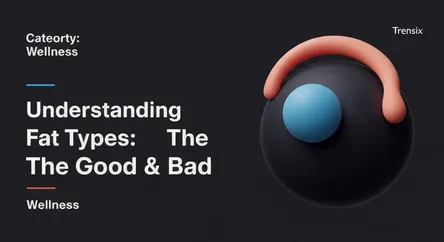Wellness
Understanding Fat Types: The Good & Bad

Not all fats are created equal. Learn the difference between good and bad fats and how they impact your health, from heart disease to inflammation.
What is it?
Dietary fats are essential macronutrients with various functions in the body, including providing energy and aiding vitamin absorption. They are broadly categorized into unsaturated, saturated, and trans fats. Unsaturated fats, found in foods like avocados, nuts, seeds, and olive oil, are considered beneficial. They include monounsaturated and polyunsaturated fats (like omega-3s). Saturated fats are present in animal products like red meat and full-fat dairy. Trans fats are primarily artificially produced through a process called hydrogenation and are found in some processed and fried foods.
Why is it trending?
For years, a low-fat diet was promoted for good health. However, recent scientific understanding has shifted the focus from total fat reduction to the type of fat consumed. There's growing public awareness that "good" unsaturated fats are crucial for health, while "bad" fats, especially artificial trans fats, should be avoided. This nuanced view is a hot topic in nutrition as people seek to optimize their diets not just for weight management, but for overall wellness, including reducing the risk of chronic diseases.
How does it affect people?
The type of fat consumed directly impacts health. Unsaturated fats can help improve blood cholesterol levels, reduce inflammation, and stabilize heart rhythms. Conversely, a high intake of saturated fat can raise "bad" LDL cholesterol, increasing the risk for heart disease. Trans fats are the most harmful; they not only raise bad LDL cholesterol but also lower "good" HDL cholesterol, significantly increasing the risk of heart disease, stroke, and type 2 diabetes. Making informed choices to replace saturated and trans fats with unsaturated fats can lead to better cardiovascular health.